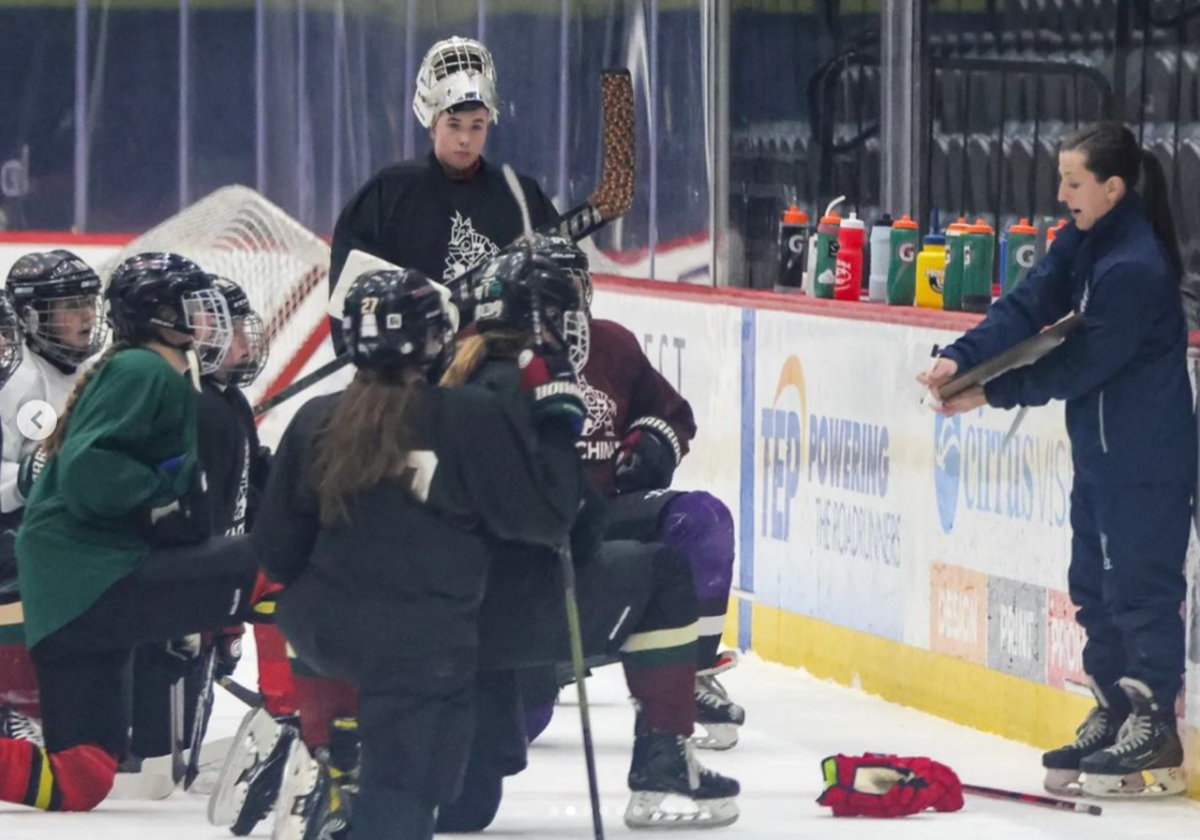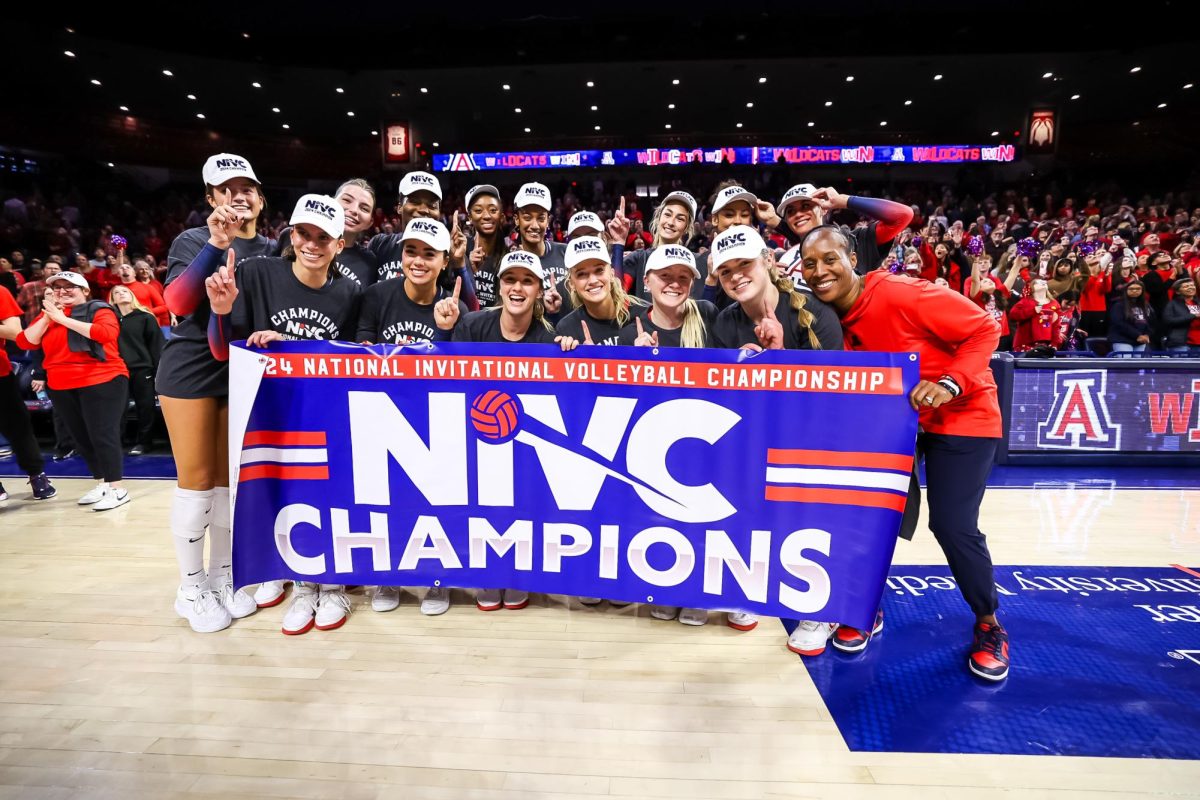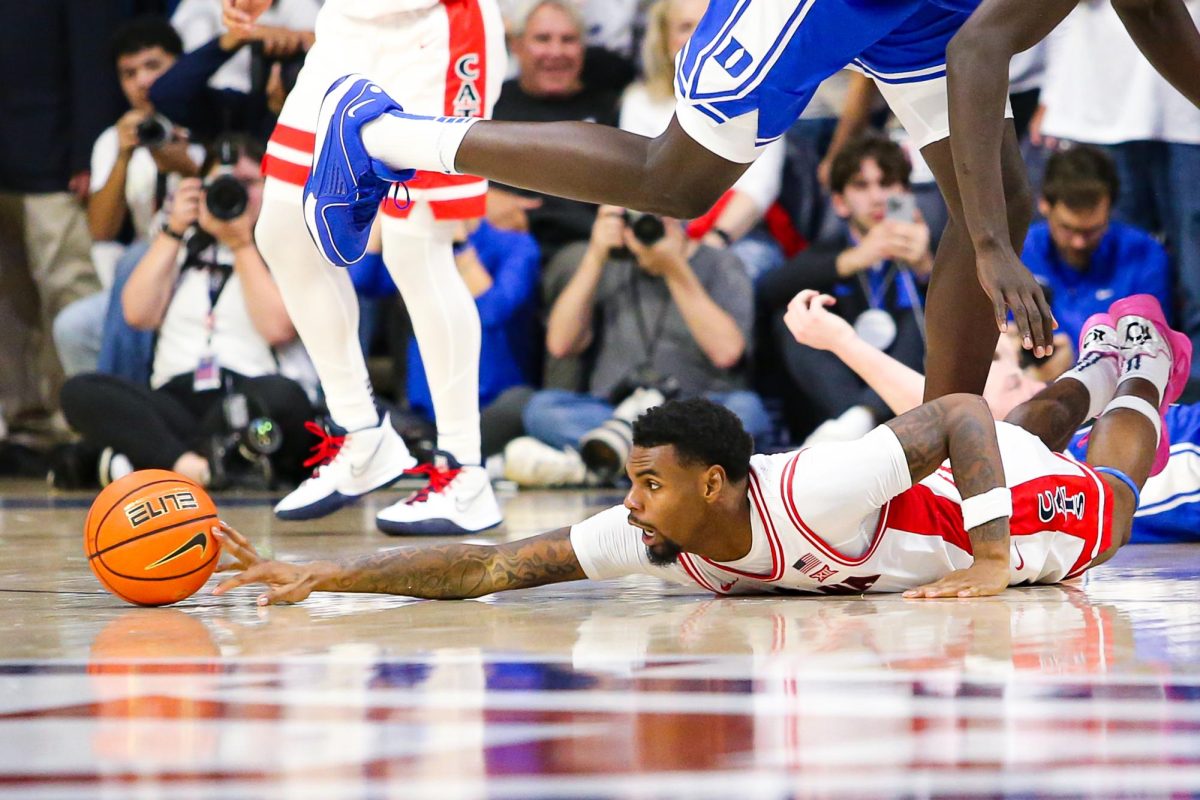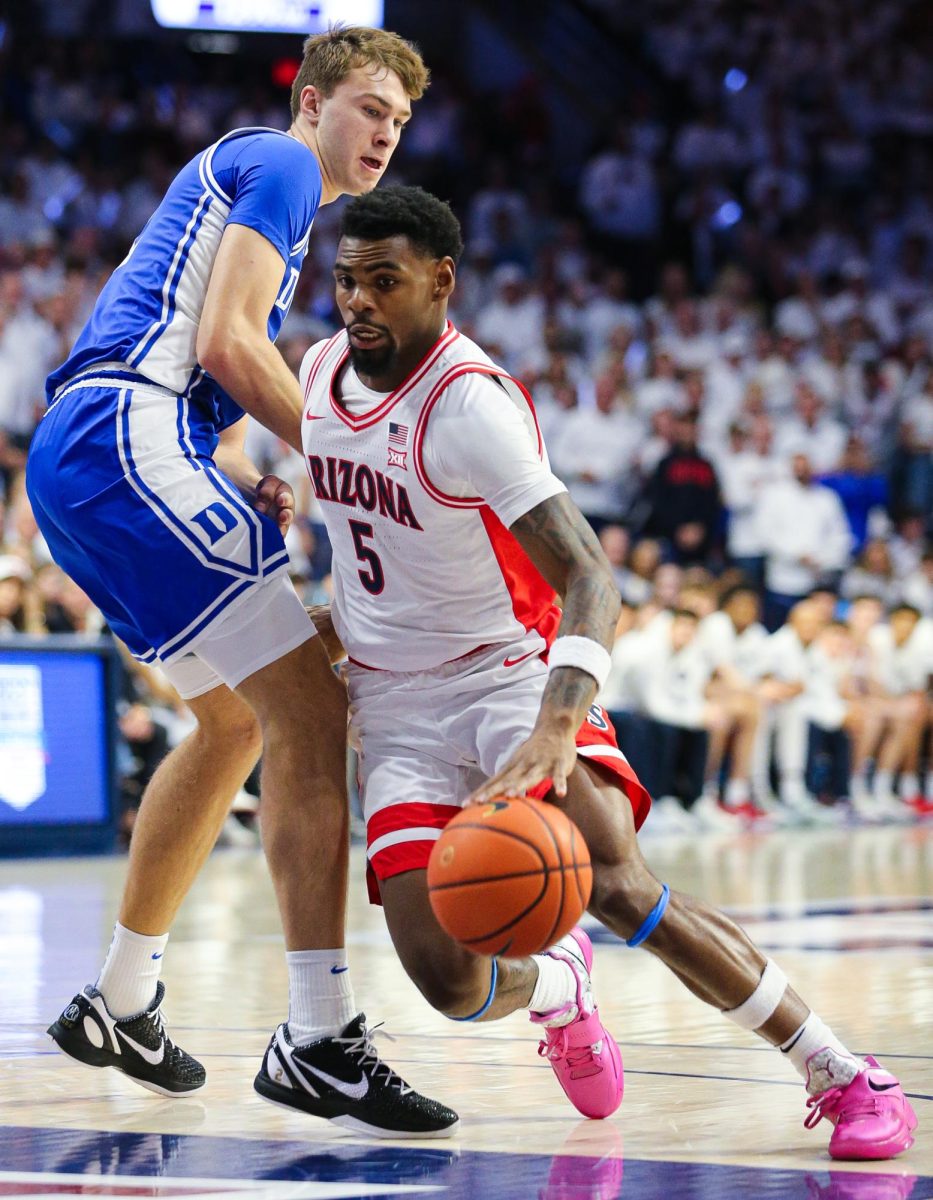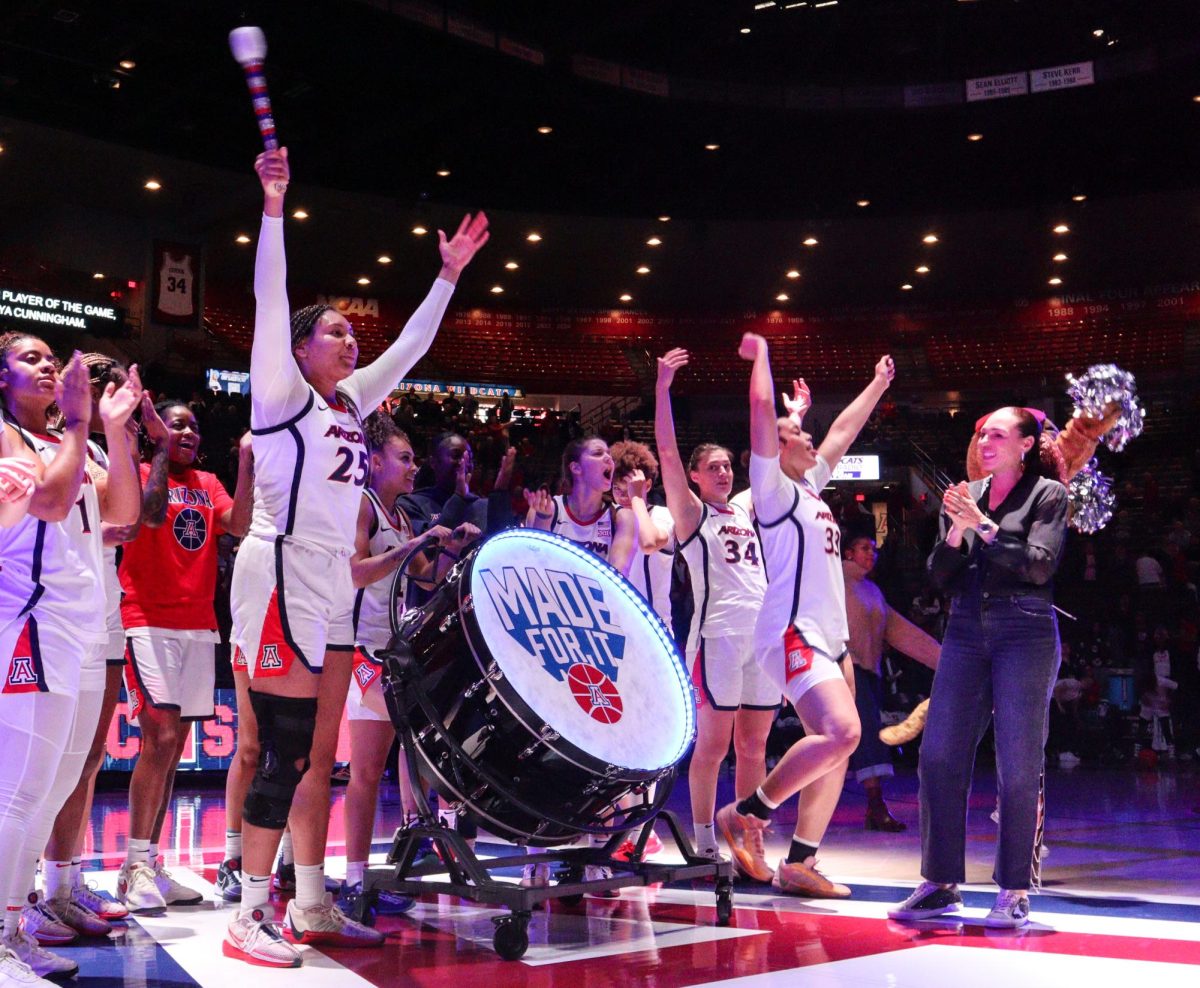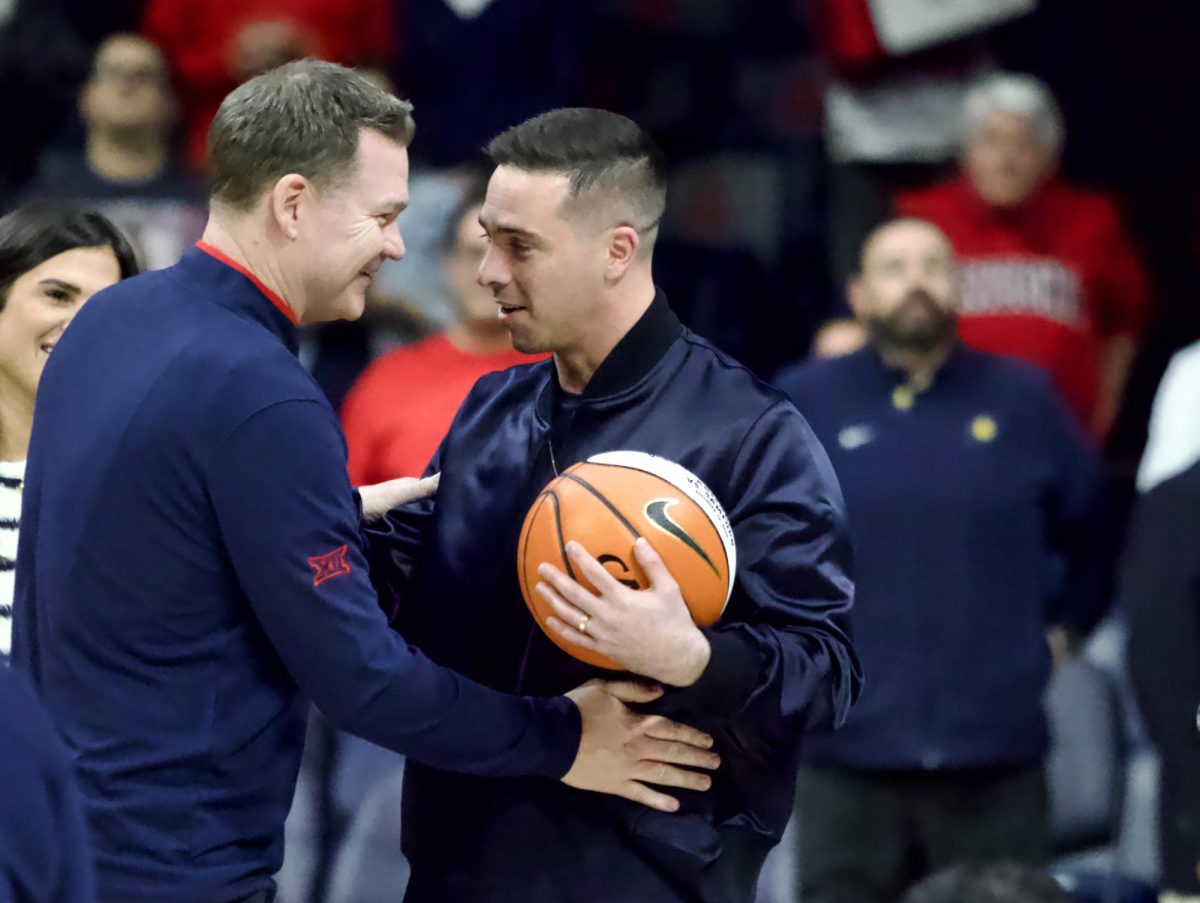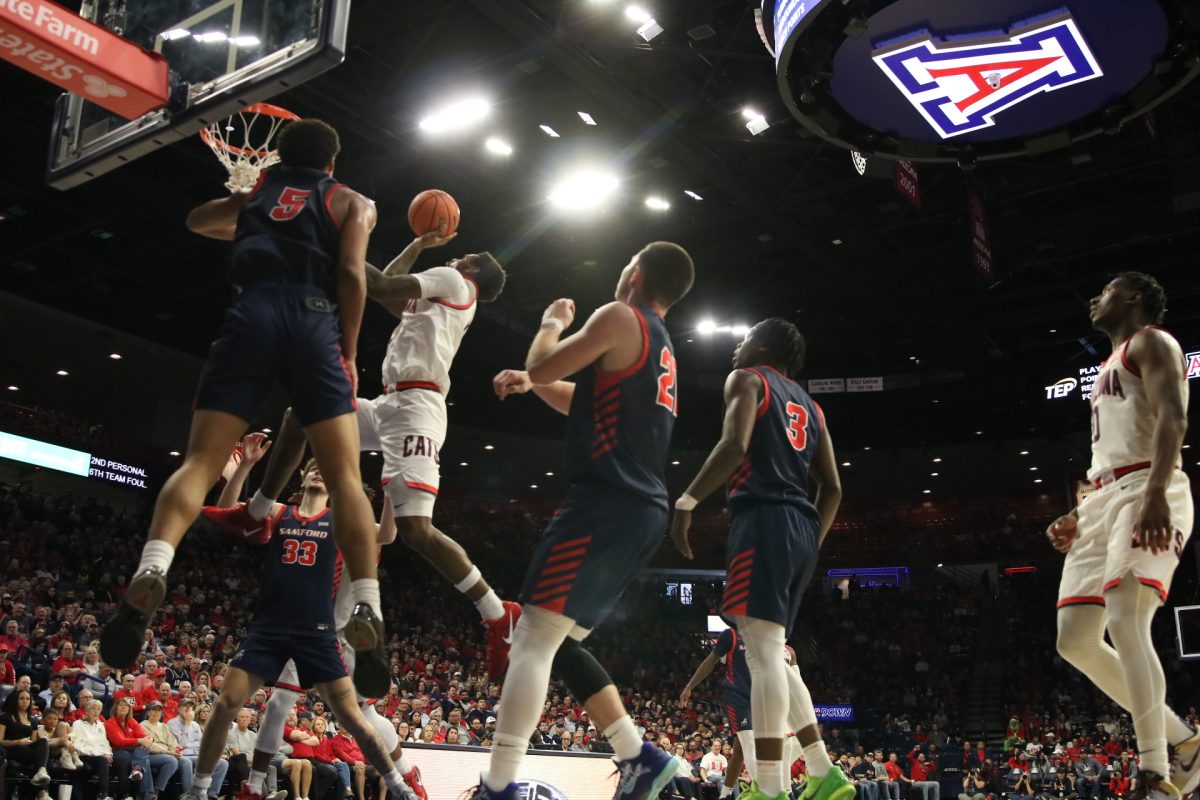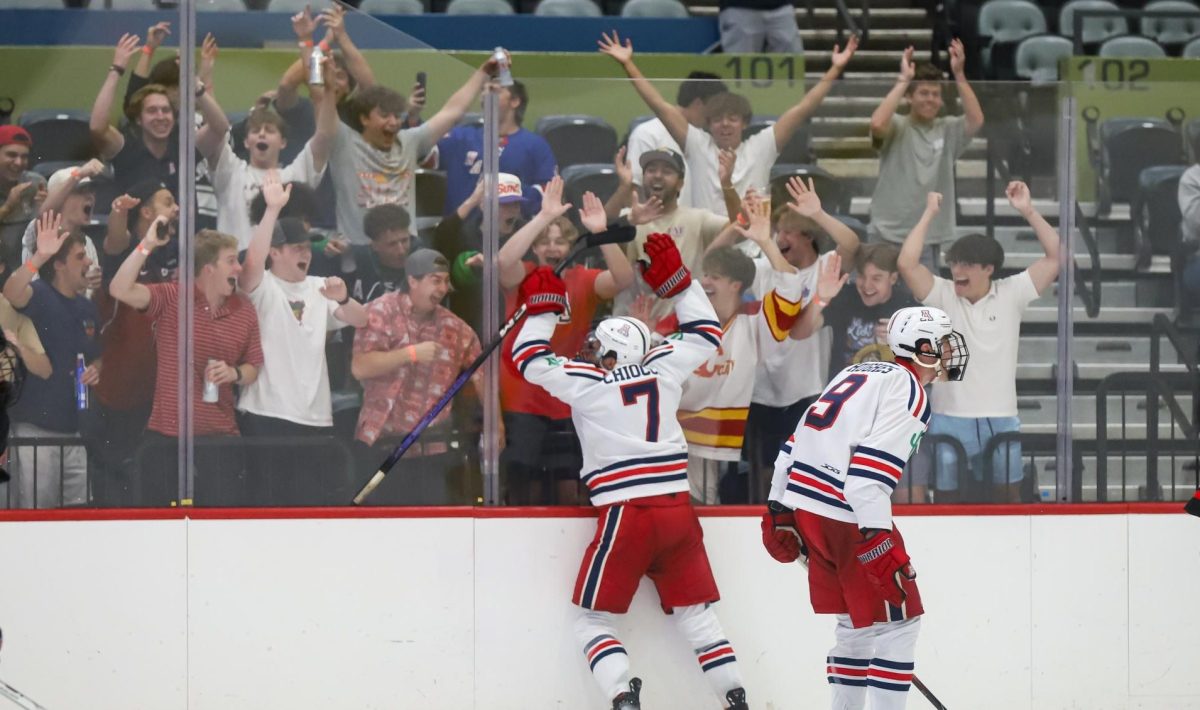Next fall, the University of Arizona first women’s hockey team will begin play in the American Collegiate Hockey Association. Its inaugural coach, Caitlin Hogan, is a former Division I hockey standout, Anaheim Lady Ducks coach and weightlifting national champion.
Hogan was raised in Oakdale, Minnesota, a suburb of Saint Paul. Unlike her three older siblings, Hogan took an interest in sports at an early age. As a child, she played on boys hockey teams because it was her only option. At North Saint Paul High School, Hogan was a four-year All-State Athlete in hockey and softball.
Hogan played college hockey at St. Cloud State University, a Division I program in Minnesota. During her senior season, she averaged more than a point per game, graduating with the school’s career points record; a record that still stands today.
To make a little extra money, Hogan spent her college summers coaching high schoolers. “I loved to teach,” said Hogan. “I loved to explain how to go through movements. I loved to give back to the sport that gave me so much.”
After graduating with a bachelor’s degree in business marketing in 2010, Hogan left Minnesota to coach for the Anaheim Lady Ducks U14 team, following the same group of players until they graduated from the Lady Ducks U19 team. She credits the experience with helping develop her skills as a hockey coach.
“I was able to see the development process of taking a youth athlete who had never trained before, had never played, never skated and then developing them into a better player and having the organization set around them to do that,” Hogan said.
In 2015, Hogan opened the Annex Training Center in Long Beach, California. Soon after, she began training in competitive weightlifting. Four months later, she won her first national championship.
Hogan had initially started weightlifting at 14 years old to compensate for her lack of height as a hockey player.
“In high school I knew that strength and conditioning needed to be my emphasis,” said Hogan, who stands only 5-foot-1 tall. “I needed to be stronger than everybody else. So I always had a love for the weight room.”
Over the course of her career in competitive weightlifting, Hogan earned six national championships and three silver medals at the Pan American Weightlifting Championships. She also represented Team USA at three world championships and was selected as an alternate at the 2016 Summer Olympics.
Hogan believes that the skills she developed through owning and operating a gym, as well as coaching CrossFit and training as a weightlifter, will prove useful as she segues into her latest venture: building a collegiate women’s hockey program from scratch.
“It broadened my skills of who I can coach, how many people I can coach at a time, teaching a totally different aspect of movement to a lot of different people,” said Hogan. “It’s let me develop my coaching even further and it’s also taught me the benefits of having a business background.”
Hogan will be the only coach on the staff for the 2024-2025 season, a decision that she made early in the process of getting the women’s hockey program off the ground.
“I’d rather have the funds going to the team to help build this team up than spread too thin with two coaches,” Hogan said.
Her duties as head coach extend beyond simply coaching: Hogan is also going to be responsible for the fundraising, scheduling, budgeting, recruiting and organizational tasks that come with running a collegiate athletics program. Hogan estimated that she received 80 emails filled with footage from interested players when she took the job last May. Some of those players will be on the inaugural team.
Hogan expects the Wildcats to carry a “very small” roster through their first year, a by-product of four-year eligibility rules and a desire to have room for roster growth in subsequent recruiting cycles. Unlike NCAA programs, ACHA teams cannot offer scholarships to recruits and are not a part of their school’s athletic departments.
NCAA women’s hockey is divided into two divisions: Division I and Division III. Division III schools are all small institutions located on the east coast or in midwestern states such as Illinois and Minnesota.
“Everybody dreams of playing Division I,” said Hogan. “As soon as you start playing, that’s where you want to go. And it’s a hard pill for people to swallow when they’re getting recruited by somebody that’s not even an NCAA Division III coach. It’s an ACHA school, it’s a club school. You have to pay to play.”
However, Hogan believes that Arizona provides players who are being recruited by Division III schools an opportunity to continue playing hockey while attending a larger institution in a warmer part of the country.
“If you want that traditional style of a university experience and environment, your only choice is Division I or the ACHA,” said Hogan. “What’s the experience you’re looking for as a student? If it’s a big school, that’s where I hit home with the U of A […]. It’s not very hard to sell palm trees and 80-degree weather in the winter.”
This appeal has allowed Hogan to focus on recruiting high-level prospects. Last July, the team announced through their Instagram the transfer of goalie Lauryn Hanafin from Division I Stonehill College in Easton, Massachusetts, to Arizona for her junior season.
“I think a lot of teams when they’re starting out, they just take anyone that they’re interested in,” said Hogan. “I wanted to set the bar pretty high so we could be competitive right away.”
Hogan’s experience as an undersized Division I player impacts how she scouts potential recruits.
“I see the game from [the perspective of] a small, short player who needed to use angling and needed to use my body to block people out as opposed to the length of my arms or my stick,” said Hogan. “It gives you that little underdog feel. I play more of a game that’s about grit, that’s about resilience, it’s about being nonstop.”
One player Hogan is particularly excited to coach is Tucson native Elly Gilbert, a defenseman on the Arizona Kachinas 19U AAA team in Phoenix.
“She gets to play at her home university,” said Hogan. “She’s super excited to be here. I’m really excited to have [her] here and continue to let her grow in Tucson.”
Gilbert is an example of a local player who has to travel to Phoenix to play hockey because Tucson lacks local ice rinks. However, that will change when the Mosaic Quarter Iceplex opens in 2026. The new off-campus facility will have three ice sheets: a 3,000-seat arena for the Wildcats’ men’s and women’s hockey teams and two community rinks for youth hockey, figure skating and curling.
Hogan believes that the new facilities will help grow the sport of women’s hockey in southern Arizona, something she cited as one of her main goals with the program.
“It creates a lot more opportunity for us to teach the sport,” said Hogan. “And not only do I want to get young girls involved, but I also want to teach older women that they can pick up the game and they can get on skates and try something new.”
Prior to the opening of the Iceplex, the Wildcats will play their home games at the Tucson Convention Center, the same arena that also currently houses the men’s team. From Hogan’s perspective, the first step toward growing the sport will simply be getting people to come watch it.
“I think that the biggest thing is that you have to get eyeballs on the sport,” said Hogan. “You need people to see it. And hockey is a very fun sport to watch. It’s very fast-paced. It’s an exciting environment to be a part of.”
Follow the Daily Wildcat on Instagram and Twitter/X



